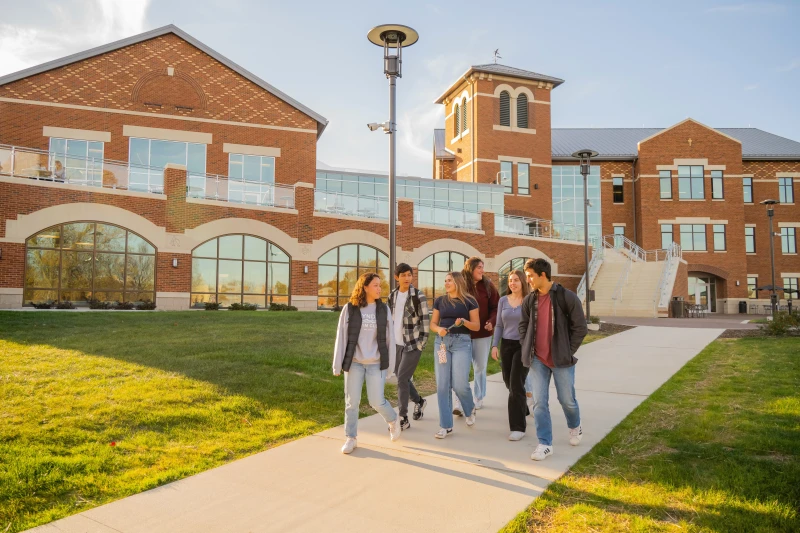

Franciscan University of Steubenville. / Credit: Photo courtesy of Franciscan University of Steubenville
Washington, D.C. Newsroom, Nov 24, 2025 / 15:08 pm (CNA).
The 2025-2026 Newman Guide will be available in December to help parents and students find reliable Catholic elementary, secondary, college, international, and graduate education programs.
The Cardinal Newman Society, which publishes a yearly guide on the most faithfully Catholic schools in the U.S., will release its new edition as both an e-book and a digest-sized print book.
The Newman Guide has recommended colleges for Catholic families for 20 years, but the 2025-2026 edition is the first that will recommend elementary schools, secondary schools, colleges, and graduate programs. The new guide follows the recent announcements of St. John Henry Newman becoming a doctor of the Church and a patron saint of Catholic education.

The guide gives families a path to a faithful Catholic education, which is growing more relevant, according to the Cardinal Newman Society, which reported a 55% decline in enrollment at Catholic schools in the last 50 years. Recognizing that Catholic education is the Church’s most effective means of evangelization and Catholic formation, the society says it continues to respond with tools, including the Newman Guide.
“With so many Catholic colleges compromising their mission, the Newman Guide served as a trusted resource to identify schools committed to forming students intellectually and spiritually in line with Church teachings,” said Dominic Kalpakgian, a student who started attending a Newman Guide-recommended college in 2024.
“The guide’s endorsement carried significant weight with my parents, who trusted the Newman Guide schools to uphold the values and principles they had instilled in me,” Kalpakgian said.
“The Newman Guide was instrumental in helping my family locate a faithfully Catholic grade school when we were moving across the country,” said Molly Metzgar, a mother, teacher, and Cardinal Newman Society employee. “While subsequently teaching at my child’s school, I helped successfully navigate the Newman Guide application process.”
The guide reaches more than 75,000 families online each year and now plans to expand numbers with the additional print version. Since starting to approve schools beyond just colleges, 28 elementary schools and 55 graduate programs have become Newman Guide-recommended.
“Out of our 160+ graduates, those who attended Newman Guide colleges are the ones still practicing their faith,” said Derek Tremblay, the headmaster of Mount Royal Academy.
How to become Newman Guide recommended
Since 2007, the Cardinal Newman Society has recognized Catholic colleges in the Newman Guide that have strong policies and standards and uphold Catholic identity within academics, athletics, faculty hiring, and campus life.
The key elements in faithful Catholic education, according to the society, is looking for salvation of souls, Catholic community, prayer, Scripture and sacrament, integral formation, and Christian worldview.
To be recognized in the Newman Guide, “a Catholic school must be committed to strong Catholic identity and model the ‘Principles of Catholic Identity in Education,’ use the Catholic ‘Curriculum Standards’ in whole or part, and align their school policies with standards promoted by the society which are derived from Church teaching.”
Catholic schools must have a curriculum that provides for the integral formation of the whole person and helps students know and understand objective reality, including transcendent truth.
The Newman Guide policy standards are derived from guidance from Church councils, popes, Vatican congregations, bishops conferences, the Catechism of the Catholic Church, and other Church documents.
Read More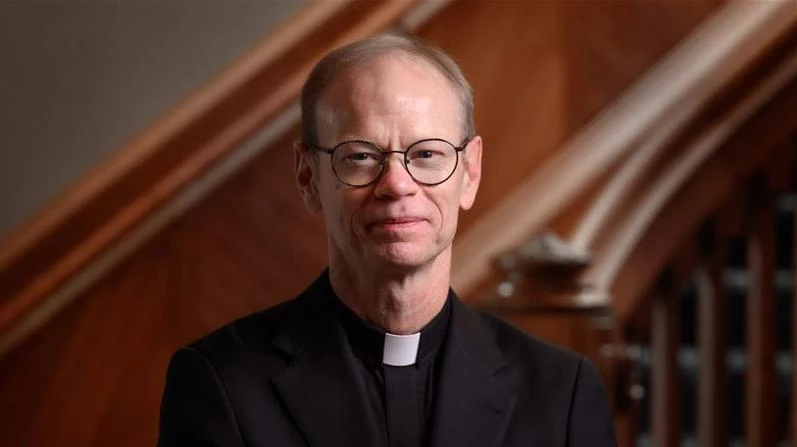

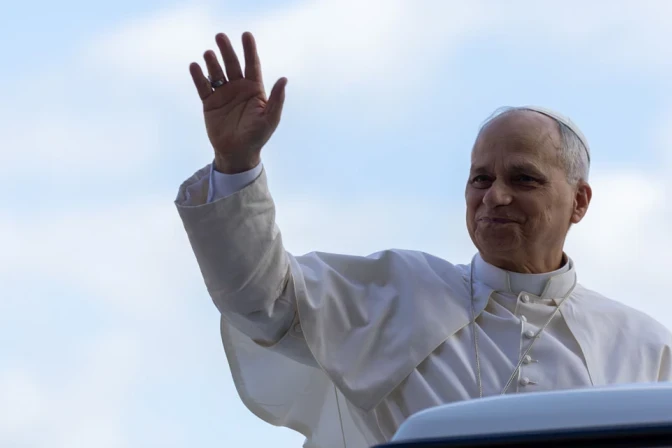

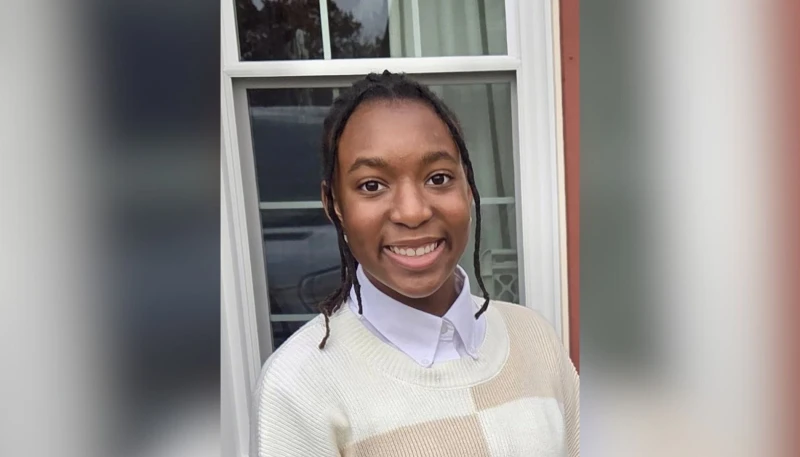



![How pregnancy centers help women: Centers provide $450 million in value, report finds #Catholic
Jessica Williams and her 3-year-old daughter were helped by First Choice Pregnancy Services in Las Vegas. / Credit: Photo courtesy of Susan B. Anthony Pro-Life America
CNA Staff, Nov 17, 2025 / 16:11 pm (CNA).
When Jessica Williams became pregnant with another man’s child while she and her husband were separated, her husband pressured her to abort the child.As soon as she took the first abortion pill, mifepristone, she regretted it. “As a nurse, the reality of what I had done had hit me hard,” said Williams, who was nine weeks pregnant at the time. “Here I was working to save lives and about to take one of my own child’s lives.” But as a nurse, Williams knew that in spite of the pill cutting off the progesterone supply to her child, the baby might still be alive. She hadn’t yet taken the second pill, misoprostol, which would expel the child from her body. When she found a pregnancy center, First Choice Pregnancy Services in Las Vegas, staff immediately brought her in for an ultrasound.“They provided a free ultrasound, and that moment changed everything,” she said. Her baby was still alive.First Choice helped her through the abortion pill reversal process, a practice to reverse the effects of mifepristone soon after the woman takes the first abortion pill. Now, her daughter is a “healthy” and “thriving” 3-year-old, Williams said when she shared her story at a Nov. 17 online press conference.Williams is one of many women who have received help from pregnancy resource centers. Pregnancy centers across the U.S. “provided over $452 million in total medical care, support and education services, and material goods in 2024,” according to a Nov. 17 report by the Charlotte Lozier Institute. Pregnancy centers saw a total of 1 million new patients last year, “which is the equivalent of each center serving a new client every day in 2024,” Karen Czarnecki, the head of Charlotte Lozier Institute, said during the press conference. During the press conference, Marjorie Dannenfelser, head of Susan B. Anthony Pro-Life America, called pregnancy centers the “beating heart” of pro-life movement. Pregnancy centers, Dannenfelser said, “are going to the roots of the problem” by providing support for mothers across the board, whether they are struggling with addiction, domestic abuse, homelessness, completing school, or any other challenge. Report debunks false claims about pregnancy centers Dannenfelser noted there are some claims “often unchecked in the media” that call pregnancy centers “fake clinics” or say they “don’t have licensed medical staff.”“This is flat-out false,” Dannenfelser said. “Eight in 10 centers are providing free or low-cost medical services, staffed by over 10,000 medical professionals.” More than 80% of these centers provide ultrasound services, according to the report. Many of the centers also provide STD and STI testing and treatment, as well as abortion pill reversal, like in Williams’ experience. The report also found a 98% satisfaction rate among their clients — something Williams attested to.“They greeted me gently and were nonjudgmental,” Williams said of the staff and volunteers at the pregnancy clinic she went to. “They provided a safe, calm space for me, emotionally, spiritually.”“They gave me information and education without pushing me in any direction,” she continued. “They simply supported me in whatever path I chose.”More than three years later, Williams still keeps up with the women at the clinic.“I’m meeting with these ladies every month still,” Williams said. “They’re just a phone call, a text away, anything I need. I mean, we’re just almost becoming a family now.” Pregnancy centers also provide material, educational, and emotional support. For instance, 92% of centers offer material items to women in need. On average, each pregnancy center distributed six-packs of diapers and five baby outfits every day, according to the report. First Choice “provided diapers, material support, emotional and spiritual support groups, parenting resources, community connections, and just so much practical help in general,” Williams said. “It was a level of compassion that carried me through my entire pregnancy.” Offering material support is a growing effort in the pro-life movement. At pregnancy centers, material support has grown by more than 300% from 2019 to 2024.Many pregnancy centers also offer a variety of other resources, including childbirth classes, breastfeeding consultations, and outreach to victims of human trafficking. “Even right now, they’re doing a monthly get-together — we get to network with other mamas,” Williams said. “We’re [able] to access any resources.” The majority of pregnancy centers also help support women who are recovering from abortions.Williams said the women at the clinic “understood the pressure and fear” she was under to abort. Even after the reversal, her husband drove her to an abortion clinic when she was 16 weeks pregnant “to finish the job,” she said. “The clinic was on the same exact street [where] I saved my baby,” she said. “I couldn’t do it and demanded he take me home. I now know that the strategic location has also saved many other babies.” “They created a safe place for me to heal and feel supported,” she said of the clinic.](https://unitedyam.com/wp-content/uploads/2025/11/how-pregnancy-centers-help-women-centers-provide-450-million-in-value-report-finds-catholic-jessica-williams-and-her-3-year-old-daughter-were-helped-by-first-choice-pregnancy-services-in-las-v.webp)

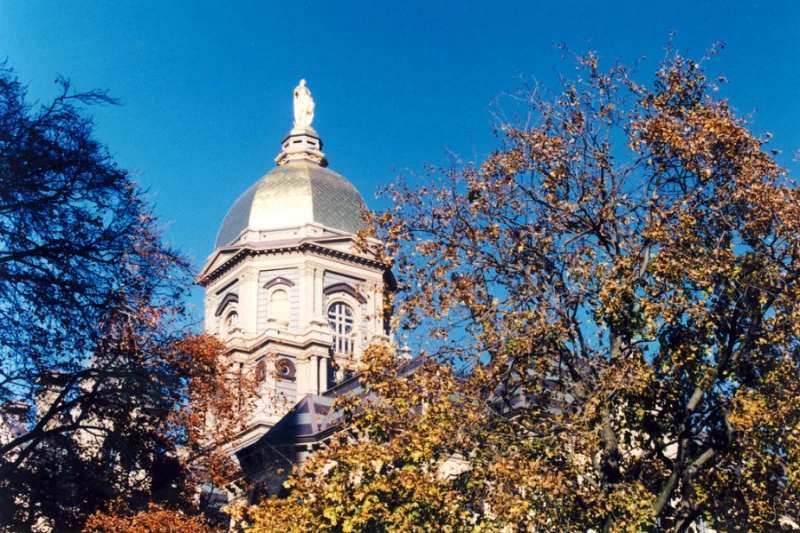



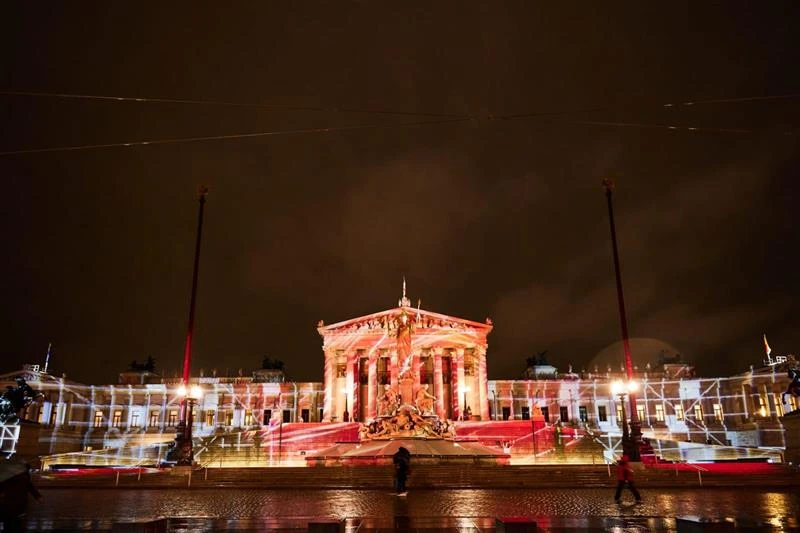

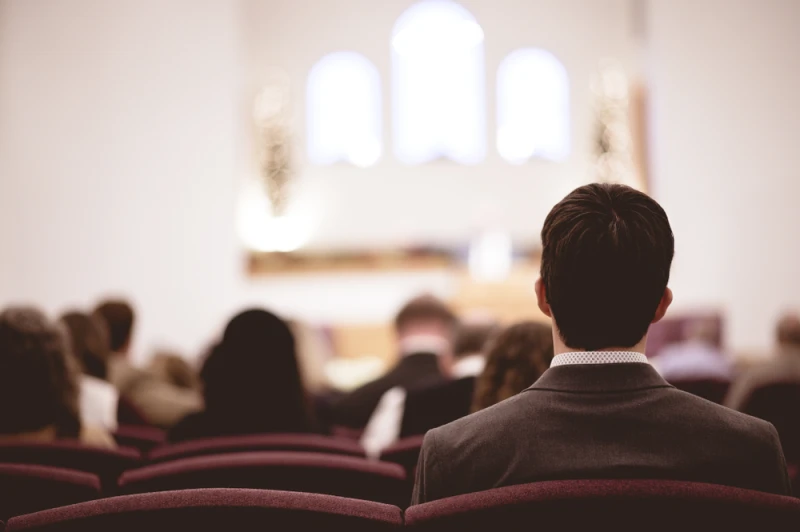

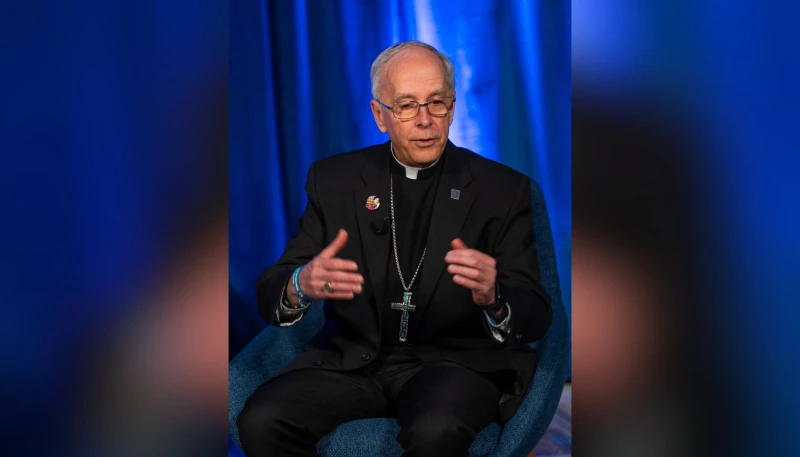

![Religious sisters announce historic land return to Wisconsin Native American tribe #Catholic
LaCrosse, Wisconsin. / Credit: JTTucker/Shutterstock
CNA Staff, Nov 7, 2025 / 06:00 am (CNA).
A Wisconsin religious community says it has completed the first known instance of a Catholic group returning land to a Native American tribe, hailing it as a move made in the “spirit of relationship and healing.”The Franciscan Sisters of Perpetual Adoration announced the transfer in an Oct. 31 news release on its website. The community is located in La Crosse, Wisconsin, near the state’s border with Minnesota.The sisters had purchased the land from the Lac du Flambeau Band of the Lake Superior Chippewa tribe in 1966 and used the property for its Marywood Franciscan Spirituality Center.The sisters said they sold the property to the tribe for $30,000, the exact amount for which they paid for the land six decades ago. The modern sale price represented “just over 1% of [the land’s] current market value,” the sisters said.The bargain sale represents “the first known return of Catholic-owned land to a tribal nation as an act of repair for colonization and residential boarding schools,” the sisters said.“Today, the tribe’s reservation represents only a fraction of [its] traditional territories,” the news release said. “Rebuilding and protecting tribal land bases is vital to sustaining sovereignty — it restores the ability for self-determination, cultural preservation, and community development.” “A strong land base supports essential services, creates employment opportunities, and provides a foundation for long-term economic and social resilience,” the sisters said. Tribal President John Johnson hailed the sale as “an example of what true healing and partnership can look like.” “We are proud to welcome Marywood home, to ensure it continues to serve future generations of the Lac du Flambeau people,” Johnson said. The sisters said the retreat center was “facing challenges to its viability,” leading the community to “discern a future for the land” in line with its institutional priorities. In their press release, the sisters said they have also been in “a process of reckoning” with the history of St. Mary’s Catholic Indian Boarding School. The sisters administered the school in Odanah, Wisconsin, from 1883 to 1969.Critics in recent years have claimed that such boarding schools participated in the erasure of Native American culture. Others have alleged that significant clergy sex abuse took place at such institutions.The sisters on Oct. 31 said such schools were guilty of “separating children from their families, suppressing Native identity, and paving the way for the large-scale seizure of Native homelands.”“It was painful to address our complicity, but we knew it had to be done,” former community president Sister Eileen McKenzie said in the press release.Diocese of Superior Bishop James Powers, meanwhile, praised the transfer, describing it as “a tangible act of justice and reconciliation that flows directly from the heart of our Catholic faith.”The Franciscan Sisters of Perpetual Adoration traces its roots to a group of Bavarian immigrants who traveled to Milwaukee in 1849 “intent upon founding a religious community to spread the Gospel among German immigrants.”The community has run hospitals and schools in Wisconsin and has also sponsored medical clinics and mission schools abroad.](https://unitedyam.com/wp-content/uploads/2025/11/religious-sisters-announce-historic-land-return-to-wisconsin-native-american-tribe-catholic-lacrosse-wisconsin-credit-jttucker-shutterstockcna-staff-nov-7-2025-0600-am-cna-a-wiscon.webp)

![A beloved Iowa priest and immigrant advocate dies at 39 #Catholic
Father Guillermo Treviño Jr.’s national profile stemmed from his immigrant rights work with Escucha Mi Voz Iowa (“Hear My Voice Iowa”), a group aiding Latino workers, including immigrants. He is shown here during a meeting earlier this year with U.S. Sen.Chuck Grassley, R-Iowa. / Credit: Photo courtesy of Escucha Mi Voz Iowa
CNA Staff, Nov 5, 2025 / 17:33 pm (CNA).
Father Guillermo Treviño Jr., a 39-year-old priest who advocated for the rights of immigrants in the Diocese of Davenport, Iowa, passed away suddenly on Oct. 31, just hours after returning from a trip to the Vatican. His death from sepsis after a fatal stomach perforation was a complication of undiagnosed diabetes, according to his sister, Mariela Treviño-Luna, who had traveled with him to Italy.Due to a shortage of priests in Iowa, Treviño served as a pastor of St. Joseph Church in Columbus Junction as well as St. Joseph Church in West Liberty, southeast of Iowa City.Treviño’s national profile stemmed from his immigrant rights work as a founder, board president, and chaplain of Escucha Mi Voz Iowa, a group aiding Latino workers, including immigrants. Treviño had just returned from Rome, where he represented the group at Pope Leo XIV’s World Meeting of Popular Movements.He fought deportations, notably for his godson, 18-year-old Pascual Pedro, a West Liberty High School soccer star U.S. Immigration and Customs Enforcement (ICE) deported this summer despite his Deferred Action for Childhood Arrivals (DACA) status. In a statement issued on the day of his death by the Diocese of Davenport, Bishop Dennis Walsh said: “Father Guillermo’s heart was consistently with those in need. Throughout the current migrant crises, he showed great compassion for the many migrants who find themselves on edge due to aggressive immigration enforcement action.” As pastor of both St. Joseph churches, Treviño nurtured the meatpacking and farming communities there with “remarkable authenticity,” Walsh said. “His voice was becoming a beacon of hope and advocacy on this vital issue, gaining national prominence,” Walsh continued in the statement. “He was recently invited to be part of a panel discussion at Georgetown University and had the distinct honor of traveling to the Vatican as part of the World Gathering of Popular Movements. His leadership and commitment to justice will be deeply missed by the Church and the wider community he so faithfully served.” Archbishop Thomas Zinkula of Dubuque recalled Treviño’s “playful and serious sides,” telling the Des Moines Register this week that “Father Guillermo loved movies, Star Wars, and professional wrestling. But he also was passionate about serving and advocating for immigrants. I was inspired by his total commitment to seeking justice and mercy for people on that particular margin of society.”Born on March 7, 1986, in San Antonio, Texas, to Maria Luna and Guillermo Treviño Sr., Treviño and his family moved to Moline, Illinois, when he was 3. He earned an associate’s degree from Black Hawk College before entering seminary at Conception Seminary College and Mundelein Seminary. Despite an initial rejection, he said at the time that his faith — rekindled after his father’s early death — drove him forward. Ordained on June 6, 2015, he quickly became a force in rural Hispanic parishes.According to the diocese’s statement, Treviño “received the National 2022 Cardinal Bernardin New Leadership Award. The award recognizes a ‘young faith-filled Catholic who has demonstrated leadership against poverty and injustice in the United States,’ according to the USCCB [U.S. Conference of Catholic Bishops].”“It recognizes the leadership, energy, and diverse skills that young people bring to the anti-poverty work of low-income projects and Catholic parishes. It highlights the gifts of young leaders and their Gospel commitment to the poor,” the statement said.Treviño’s funeral Mass is set for Nov. 7 at Sacred Heart Cathedral in Davenport and will be livestreamed on YouTube. He is survived by his mother, sisters, and extended family.](https://unitedyam.com/wp-content/uploads/2025/11/a-beloved-iowa-priest-and-immigrant-advocate-dies-at-39-catholic-father-guillermo-trevino-jr-s-national-profile-stemmed-from-his-immigrant-rights-work-with-escucha-mi-voz-iowa.webp)



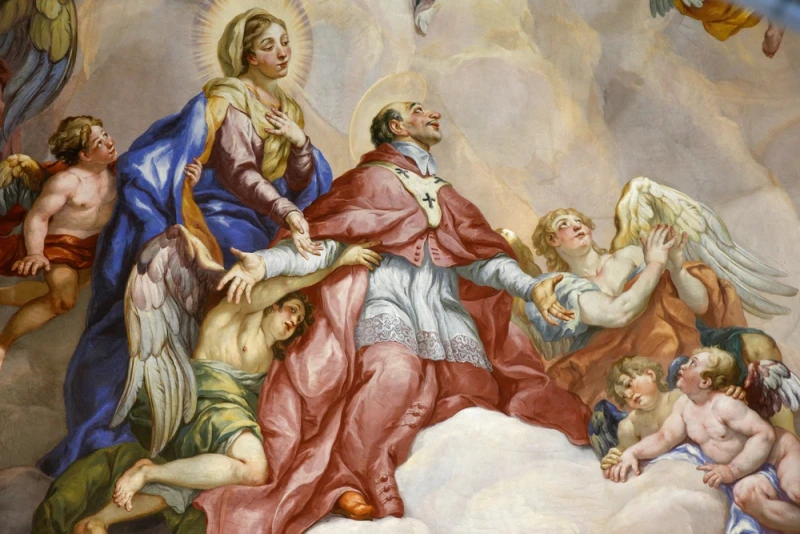



![10,000 pro-lifers join LIFE Runners annual relay across the U.S. #Catholic
Finish line of the A-Cross America Relay, hosted by Benedictine College in Atchison, Kansas. / Credit: Photo courtesy of LIFE Runners.
CNA Staff, Nov 1, 2025 / 05:55 am (CNA).
A pro-life relay with more than 10,000 participants came to a joyful conclusion in Kansas last Saturday after runners made the shape of a cross as they ran across the U.S.The 5,124 mile “A-Cross America Relay,” organized by pro-life group LIFE Runners, kicked off in September in four cities around the country and ended at Benedictine College in Atchison, Kansas on Oct. 25.The starting points were San Francisco, California; New York City, New York; Austin, Texas; and Fargo, North Dakota, but participants around the world also joined to witness to life in their own nations. The San Francisco kickoff of the A-Cross America Relay began at Star of the Sea Church with students from Stella Maris Academy. Credit: Photo courtesy of LIFE Runners.With more than 25,000 “teammates” in nearly 4,000 cities across 50 countries, LIFE Runners aim to raise awareness for unborn children during their annual relay. Patrick Castle, president and founder of LIFE Runners, spoke with CNA about what inspires participants to run for the unborn. CNA: What inspires the mission of LIFE Runners? Castle: LIFE Runners is inspired by the obvious responsibility of Christians to reach the youth, pregnant mothers, fathers, and influencers with God's love and the truth that abortion isn't a solution to anything, it is the greatest problem, the greatest evil by definition, by the numbers. Abortion claims more American lives in one year than all combat casualties in the history of America. With the 250th anniversary of our country next year, may we reflect on who we are as Americans and as Christians. We are people who stand for God and His gifts of life and liberty. Amen!How does the relay help raise awareness for the unborn?Castle: The LIFE Runners A-Cross America Relay helps raise awareness for the unborn through our public witness [of] wearing “REMEMBER The Unborn” shirts. Eighty-two percent of post-abortion mothers said if they had encountered one supportive person or encouraging message, they would have chosen life. For example, two mothers saw our “REMEMBER The Unborn” witness outside of the Omaha Planned Parenthood, asked for help, and chose life. New York City kickoff for the A-Cross America Relay. Participants prayed and then walked with the big “REMEMBER The Unborn” banner to the Father Francis Duffy statue in Times Square. Credit: Photo courtesy of LIFE Runners.Thousands of people witnessed thousands of LIFE Runners wearing "REMEMBER The Unborn" shirts across America and around the world during the 5,124 mile relay that made a cross over America. With access to abortion in the mail and across state lines, LIFE Runners wear life-saving messages everywhere to inspire a culture of life at work, school, walking, running, grocery store; everywhere! What stood out to you from the finish line relay at Benedictine College in Atchison, Kansas? Castle: I am so encouraged by the authentic, Catholic, pro-life identity of Benedictine College … While running up the hill, students invited other students to join us, like a scene out of the "Rocky" movie when the local community joined him on a training run. The last mile ended on the main campus drive with President [Stephen] Minnis leading a large crowd with cheering. The finish was immediately followed by a beautiful prayer from Archbishop [Joseph]Naumann.What is the significance of having a national relay across the United States? Castle: The significance of having a relay that makes a cross over America is unity. [The relay] connects everyone in a pro-God way, allowing faith and light to overcome the darkness to end abortion — all in Christ for pro-life! Teammates in other countries adopt segments, knowing that America can and should lead the way in ending abortion around the world. The relay is an inspiring light for the world. The cross is the greatest symbol of love, bringing hope that life will prevail!The North arm kickoff of the A-Cross America Relay in Fargo, North Dakota. NDSU Newman Center students helped launch the north arm with a 2.7 mile prayerful witness walk. Credit: Photo courtesy of LIFE Runners.](https://unitedyam.com/wp-content/uploads/2025/11/10000-pro-lifers-join-life-runners-annual-relay-across-the-u-s-catholic-finish-line-of-the-a-cross-america-relay-hosted-by-benedictine-college-in-atchison-kansas-credit-photo-courtesy-of.webp)




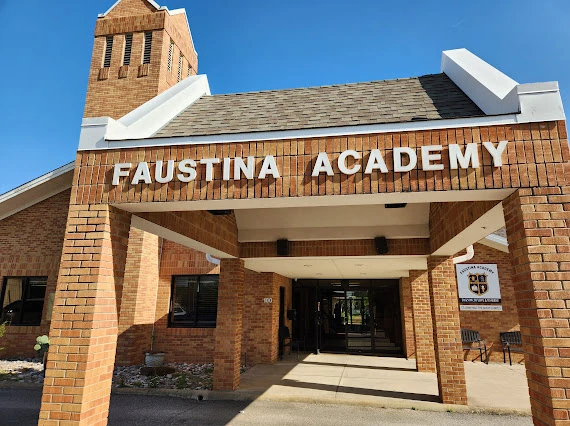




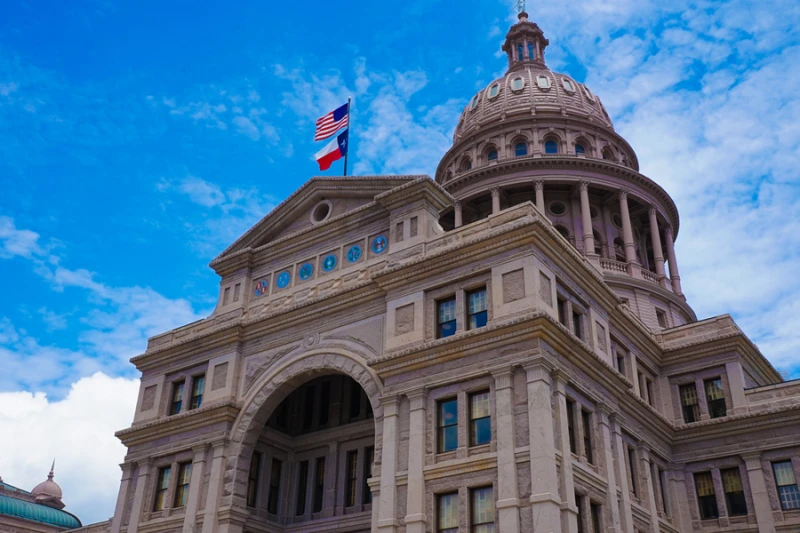



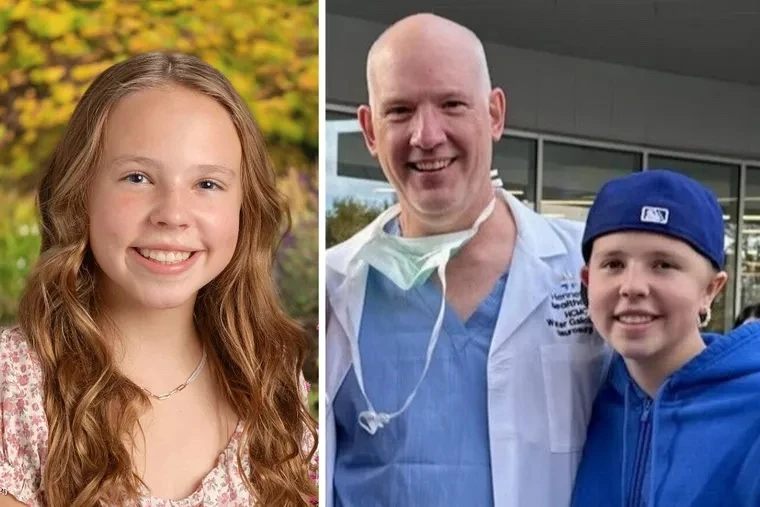




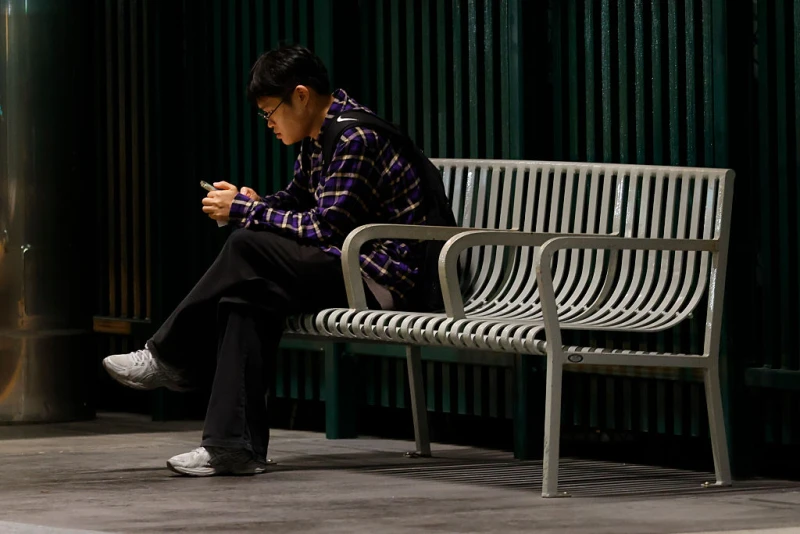

![Judge rules against saints’ statues on Massachusetts government building #Catholic
Statues of St. Florian (at left) and St. Michael the Archangel (at right) are currently barred from appearing on the planned public safety building of Quincy, Massachusetts. / Credit: Courtesy of Office of Mayor Thomas Koch
Boston, Massachusetts, Oct 16, 2025 / 12:18 pm (CNA).
A Massachusetts trial court judge has issued an order blocking the installation of statues of two Catholic saints on a new public safety building in the city of Quincy, setting up a likely appeal that may determine how the state treats separation of church and state disputes going forward.The 10-foot-high bronze statues of St. Michael the Archangel and St. Florian, which were scheduled to be installed on the building’s façade this month, will instead await a higher court’s decision.The statues cost an estimated $850,000, part of the new, $175 million public safety building that will serve as police headquarters and administration offices for the Boston suburb’s fire department.Quincy Mayor Thomas Koch, a practicing Catholic, has said he chose St. Michael the Archangel because he is the patron of police officers and St. Florian because he is the patron of firefighters, not to send a message about religion.But the judge said the statues can’t be separated from the saints’ Catholic connections.“The complaint here plausibly alleges that the statues at issue convey a message endorsing one religion over others,” Norfolk County Superior Court Judge William Sullivan wrote in a 26-page ruling Oct. 14.The judge noted that the statues “represent two Catholic saints.”“The statues, particularly when considered together, patently endorse Catholic beliefs,” the judge wrote.The plaintiffs who brought the lawsuit challenging the statues — 15 city residents represented by the American Civil Liberties Union of Massachusetts — have amassed facts that “plausibly suggest that an objective observer would view these statues on the façade of the public safety building as primarily endorsing Catholicism/Christianity and conveying a distinctly religious message,” the judge wrote.Rachel Davidson, staff attorney at the ACLU of Massachusetts, who argued the case during a lengthy court hearing on Sept. 19, praised the judge’s decision.“This ruling affirms the bedrock principle that our government cannot favor one religion above others, or religious beliefs over nonreligious beliefs,” Davidson said in a written statement. “We are grateful to the court for acknowledging the immediate harm that the installation of these statues would cause and for ensuring that Quincy residents can continue to make their case for the proper separation of church and state, as the Massachusetts Constitution requires.”The mayor said the city will appeal.“We chose the statues of Michael and Florian to honor Quincy’s first responders, not to promote any religion,” Koch said in a written statement provided to the National Catholic Register, CNA’s sister news partner, by a spokesman. “These figures are recognized symbols of courage and sacrifice in police and fire communities across the world. We will appeal this ruling so our city can continue to celebrate and inspire the men and women who protect us.” The lawsuit, which was filed May 27 in Norfolk County Superior Court in Dedham, relies on the Massachusetts Constitution, not the U.S. Constitution, but there is a tie-in.In 1979, the Massachusetts Supreme Judicial Court adopted the U.S. Supreme Court’s 1971 three-pronged “Lemon test” when considering church and state cases — whether a law concerning religion has “a secular legislative purpose,” whether “its principal or primary effect … neither advances [n]or inhibits religion,” and whether it fosters “excessive entanglement between government and religion.” The state’s highest court also added a fourth standard — whether a “challenged practice” has “divisive political potential.”But in June 2022, the U.S. Supreme Court ditched the Lemon test in Kennedy v. Bremerton School District, a case involving prayers offered by a high school football coach in Washington state.If the Massachusetts Supreme Judicial Court, which is the ultimate interpreter of state law, takes the Quincy statues dispute, it would be the first time the court has considered a case on point since the U.S. Supreme Court’s Kennedy decision.This story was first published by the National Catholic Register, CNA’s sister news partner, and has been adapted by CNA.](https://unitedyam.com/wp-content/uploads/2025/10/judge-rules-against-saints-statues-on-massachusetts-government-building-catholic-statues-of-st-florian-at-left-and-st-michael-the-archangel-at-right-are-currently-barred-from-appea.webp)






![Faith-based ministries discuss how to further pro-life mission #Catholic
Kat Talalas, Amy Ford, Christopher Bell, and Sister Maria Frassati, SV, speak at the Leading with Love Conference at The Catholic University of America in Washington, D.C., on Oct. 8, 2025. / Credit: Tessa Gervasini/CNA
Washington, D.C., Oct 9, 2025 / 12:55 pm (CNA).
Pro-life leaders from across the country gathered this week to discuss how faith-based ministries are helping to cultivate a society that promotes human dignity and how others can advance the cause.The Leading with Love Conference at The Catholic University of America (CUA) in Washington, D.C., was sponsored by the Human Life Foundation and the Center for Law and the Human Person at The Catholic University of America’s Columbus School of Law. It was aimed at “empowering Christians to cultivate a culture of life within their local communities.”Jennie Bradley Lichter, president of the March for Life Education and Defense Fund, spoke to attendees Oct. 8 about the power of faith-based ministries, including The Guadalupe Project. Lichter founded the initiative in 2022 to provide resources and encouragement to parents within the CUA community.To cultivate this encouragement, we must figure out how we can “create more of a revolution of love,” Lichter said. “Christ started this revolution of love, but it’s now up to each one of us in our particular time and place.”“Caring for unborn babies and their mothers is one of the most urgent challenges of our time, Lichter said. “Six out of 10 women who have chosen abortion would have preferred to choose life if they had the emotional and financial support they felt necessary.” The Guadalupe Project’s goal was to combat this by “[making] sure every woman on campus knows that resources exist and knows exactly how to find them,” Lichter said. “It’s meant to support all parents on campus, not just students, and not just mothers in unexpected or challenging circumstances.”“We wanted to foster a culture on campus where each life is celebrated, knowing that a positive, vibrant, and joyful culture of life is truly life-giving in so many ways,” Lichter said. The initiative “revamped all of the university’s pregnancy resource materials for students” and created “a poster campaign, including one designed specifically for the men’s dorms,” Lichter said.It also promoted the placement of stickers in every women’s restroom stall on campus with a QR code leading to these pregnancy materials. The campus started allotting more maternity and paternity leave, designating maternity parking spots on campus, providing free diapers and wipes at the campus food pantry, holding maternity clothing drives, and “affirming the goodness of family life and that new babies are a moment to celebrate,” Lichter said.The 2026 theme for the March for Life is “Life Is a Gift,” Lichter said. The initiative helps carry that out, because “life is something to be celebrated.” She added: “[Life] is not a burden for which someone needs support, or not solely that. It is really a cause for celebration.” Faith-based communities can use The Guadalupe Project as “prototype,” Lichter suggested. She shared that other universities have reached out to talk about the initiative as they were inspired to consider doing something similar.“We need to make sure that pregnant women never reach the point of despair that drives them into the arms of the abortion clinics,” Lichter said. “We need to meet that moment of loneliness, fear, or emptiness with encouragement and empowerment.”Hopes and suggestions for faith-based ministries Other leaders from prominent pro-life ministries discussed what gives them hope for the future of the pro-life movement, including Kat Talalas of Walking with Moms in Need, Amy Ford of Embrace Grace, Christopher Bell of Good Counsel Homes, and Sister Maria Frassati of the Sisters of Life.Talalas, who is the assistant director of pro-life communications for the U.S. Conference of Catholic Bishops, said Walking with Moms in Need started five years ago but has already reached countless communities. The parish-based initiative is “to the point where we don’t even know a lot of the time what new diocese or parish is starting a Walking with Moms in Need, what new lives are being saved, [and] what new women are being accompanied,” Talalas said. “It’s taken on a life of its own. That’s the work of the Holy Spirit — the Holy Spirit convicting hearts.”“God guides us, we have each other, and we’re not alone. Just as we tell [mothers] that they’re not alone, we’re not alone in this movement. So what’s giving me hope is seeing the Holy Spirit catch fire and individual people saying: ‘I want to start talking with moms in need,’ and women saying: ‘I can do this,’” Talalas said. Talalas said the work all begins with prayer. “It’s sitting in the presence of the love of God, letting him love you, and seeing how the Holy Spirit convicts you … It begins with that individual conviction. If we’re not following God’s law, it doesn’t matter what we’re doing.”Ford, who leads Embrace Grace, which provides mothers support through local churches, said she has “noticed there’s a lot of people that seem like they have more of an open heart about Christianity, about spirituality … especially with the younger generation.” She added: “I think that’s something we can all have hope about.”To get involved, Ford said people need to carry out “the good works that God’s called us to do.” She posed the question: “What strengths and gifts did God put inside each of you that you can do?” While Bell’s ministry, Good Counsel, provides services including housing for homeless mothers and children and post-abortion healing services, he said every person can help by simply praying. He specifically called on people to pray in front of an abortion center. “If you have done it, do it again. If you’ve never done it, just go ... You don’t have to say anything. You didn’t have to look up. You don’t have to open your eyes. But your presence will mean the world,” Bell said. “The babies who will die there that day will know that you loved them … That’s the most important thing to do.”Sister Maria Frassati shared that “we could really grow in having more faith in what [God] is doing.”“The truth is that God is actually really working in so many ways,” she said. “God is faithful, and that really gives me a lot of hope that nothing that you give is ever wasted. Even if you walk with a woman who’s not receptive, there’s really no gift that has been offered to him that he has not kept sacred and precious in his heart.”](https://unitedyam.com/wp-content/uploads/2025/10/faith-based-ministries-discuss-how-to-further-pro-life-mission-catholic-kat-talalas-amy-ford-christopher-bell-and-sister-maria-frassati-sv-speak-at-the-leading-with-love-conference-at-the-ca.webp)







